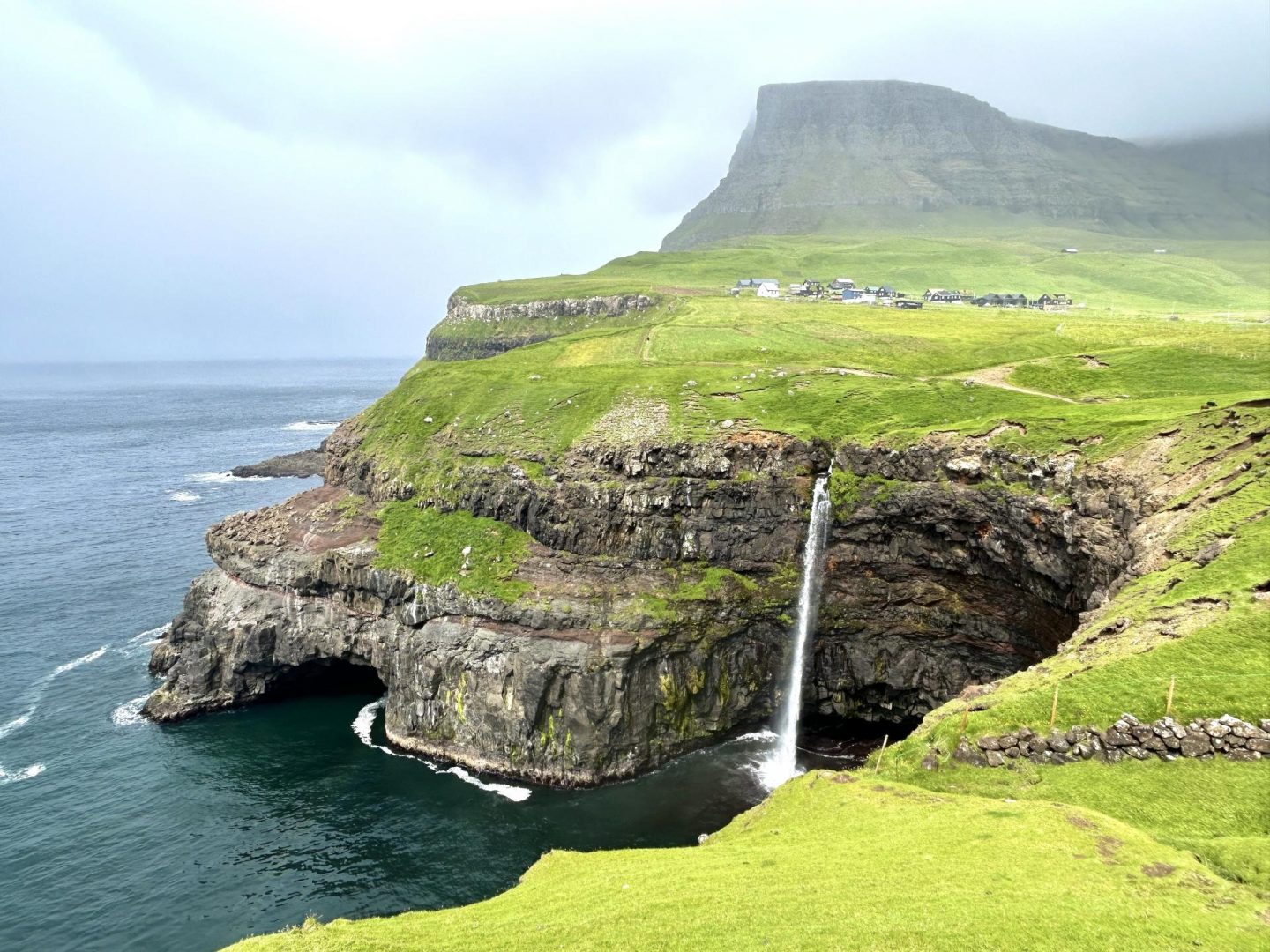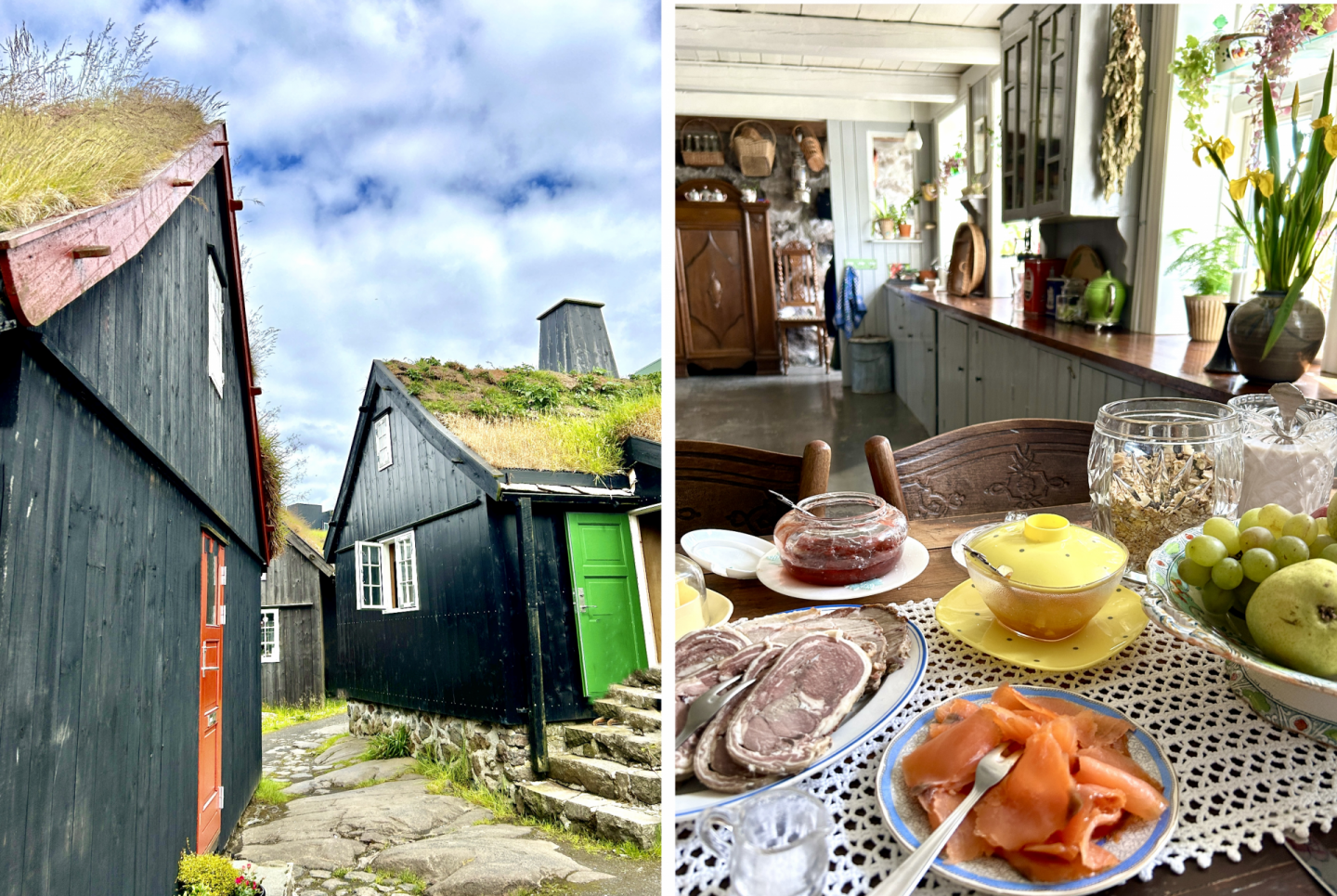
Tú alfagra land mítt (“Thou fairest land of mine”) is the motto of the Faroes, and it feels like an apt one when you first spot this fabled archipelago from the air, vibrant green islands laid out like a treasure map. Many of us only know this tiny, self-governing region of the Kingdom of Denmark as an area mentioned in the Shipping Forecast, and these 18 islands are definitely remote, perched so high up in the Atlantic Ocean that the Faroese refer to the Outer Hebrides islands of Scotland, 200 miles below them, as the ‘Southern Isles’.
Wild Islands: Exploring the Faroes
The Faroes are just a 1.30hour flight from Edinburgh, but they feel like another, untouched world, where fishing communities perch on the edge of wild empty landscapes crossed by miles of mountain hiking trials. There’s also a surprisingly vibrant capital, Torshavn, with an exciting foodie scene (puffin and potatoes, anyone?). This is still a land of extremes – the Faroes have no trees, a total of five traffic lights, 340 mountain peaks and more sheep than people. Just 55,000 hardy souls call these islands home, but the islands have a strong culture of music, art and crafts (including the highest number songwriters per capita in the world and a wonderfully creative wool industry) and a deep connection to thousands of years of history, with many locals tracing their ancestry back to the Vikings who settled here in the 9th century. And while the islands the locals call Føroyar are now getting a name for themselves as an outdoorsy type’s dream destination, they still feel like a well-kept secret.

18 islands make up this green archipelago, and are easy to hop between – most are now linked by undersea tunnels or roads cleaved straight through the mountainside, connecting remote villages that once were barely reachable even by neighbouring islanders.

If the Faroes can be said to have a bustling Metropolis, it’s Tórshavn – or Thor’s Haven, surely the most lyrical name for a capital city anywhere on earth. The capital has apparently changed drastically in the last twenty years (there’s even a Burger King now) but when I visited it felt timeless and relatively untouched. Old wooden cottages with turf-clad roofs spill down to the harbour where fishing boats are moored and ferries leave daily for the outlying islands. The city centre is stuffed with cosy pubs and cutting-edge restaurants serving dried fish, fresh sea urchin and other local delicacies, and you can stop for coffee in Paname Cafe or buy hiking guidebooks from H.N. Jacobsens Bókahandil, a 150-year-old bookshop. This feels like a community built on trust, with miniscule levels of crime – perhaps because it’s all watched over by the Ting, one of the world’s oldest governments, which can still wander around freely today. Where else in Europe could you stroll right up to the Prime Minister’s office if you felt like it?

I’m visited in June, when temperatures are at their warmest (a balmy 10°C) and the sun barely dips beneath the horizon at night. In January, darkness can fall as early as 2pm. But in any season, the Faroes see every kind of weather in a day, squally showers completely enveloping views of the mountains before being swept away suddenly by the shining sun. ‘We don’t have bad weather, just a lot of it!’ is a popular local saying. It’s hard to imagine how extreme life can be in the winter months, when darkness is near-total and snow can still cut communities off completely.

On my last day on the islands, I meet some of the most charming locals. I stride across Suðuroy, following Johan, who helps to run charming traditional guesthouse one of the hosts of Heima í Stovu, along dizzyingly narrow sheep trails to reach the jaw-dropping Ásmundarstakkur sea cliff and Rituskor sea stacks, rearing out of the iron-blue and encircled by wild birds. We hike further south and soon are creeping quietly around a tall headland to a secret spot Johan knows, lying flat on our bellies to spot one of the Faroes’ best-loved visitors – clown-like puffins, popping in and out of their burrows with beaks full of fish.

Favourites from the Faroes

Hike: The Old Postman’s Trail. This steep 5-mile route was used to transport supplies and even to carry coffins across the island of Vágar. While the postman now has a tarmac road for his rounds, the old trail still sweeps past incredible views of the fjords and across to the island of Mykines, rich in birdlife.
Experience: Heimablidni. Translated as ‘home hospitality’, it’s the act of opening up your house to newcomers for dinner. You can simply be invited in, or the tourist office can put you in touch with Faroese farmers and fisherfolk.
View: The iconic Múlafossur waterfall, which tumbles and plunges for 30 metres down a sheer cliff face into the Atlantic.
Stay: Hotel Føroyar, a great adventure base with views over Tórshavn, doubles from £77 per night and Heima í Stovu, a cosy, traditional boutique guest house on Suðuroy offering hiking and foodie experiences, rooms from £113 per night (heimaistovu.fo).
Atlantic Airways fly to the Faroe Islands from Edinburgh twice weekly from £140. Find out more at Visit Faroes.